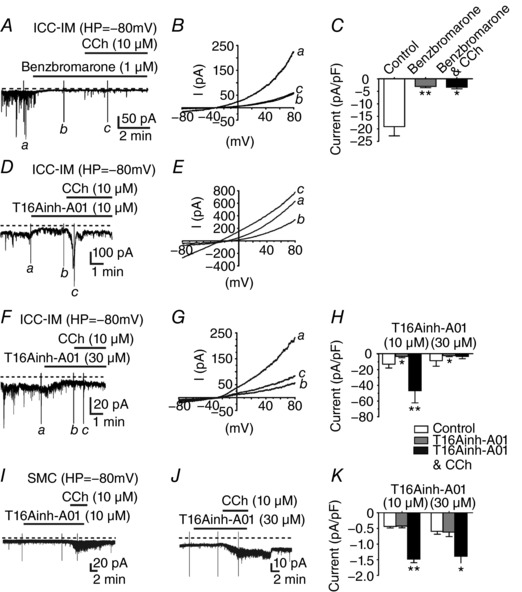Figure 5. Second generation Ano1 inhibitors blocked STICs and CCh induced currents in ICC‐IM but not SMCs.

A–C, benzbromarone (1 μm) inhibited sustained inward current and STICs in ICC‐IM. B, inward currents in response to voltage ramp protocols applied under control conditions (a) were reduced significantly in benzabromarone (b) and in the presence of CCh (10 μm) (c). Time points for (a) to (c), where ramps were applied are shown in A. C, summarized responses of normalized current densities applied under control conditions, in benzbromorone and in benzbromorone and CCh (n = 5). D–H , effects of T16Ainh‐A01 (10–30 μm) on sustained and CCh‐induced inward currents in ICC‐IM. D and E, T16Ainh‐A01 (10 μm) reduced sustained inward current and CCh (10 μm) induced current. Voltage ramp protocols applied at the time points (a) to (c) in (D) under control conditions (a) were reduced by T16Ainh‐A01(b) but increased after CCh (c). F and G, at higher concentrations, T16Ainh‐A01 (30 μm) reduced sustained current and CCh evoked inward currents. Voltage ramp protocols in (G) were applied at the time points (a), (b) and (c) in (F). H, summary of CCh evoked responses (pA pF–1) in T16Ainh‐A01 (10 and 30 μm). T16Ainh‐A01 (10 and 30 μm) inhibited sustained inward currents but 30 μm was necessary to inhibit CCh evoked inward currents. I–K, effects of T16Ainh‐A01 (10 and 30 μm) on CCh evoked currents in SMCs. I and J, T16Ainh‐A01 (10 and 30 μm) did not inhibit noisy sustained inward currents or CCh evoked currents in SMCs. K, summary of normalized current density under control conditions (white bar), in T16Ainh‐A01 (grey bar) and CCh in the continued presence of T16Ainh‐A01(black bar). CCh still evoked responses in SMCs in T16Ainh‐A01. Summarized data in (C), (H) and (K), * P < 0.05; ** P < 0.01 one‐way ANOVA.
